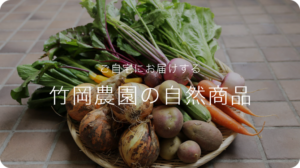It will be open to elementary, junior high, and high school students.
It will be open free of charge for one year so that all children can have various learning opportunities and choices (by donation system).
We are looking for parents and children who are interested in this school, as well as volunteer staffs, so please feel free to join the guidance event above if you are interested in any of them.
<Details>
Date and time: Monday, February 7, 2022 Doors
open: 9:30 a.m.
Participation fee: Free
Place: Takeoka Farm
To register, please fill out the following Google form.
https://onl.la/jKK1Lrf
If you have a g-mail account, you can log in to the above form, but if you don’t have any accounts, please use the official line account or the farm’s inquiry form.
Schedule for the guidance event
10:00~ Briefing session
・What is SATOYAMA school?
・Operation system
・How to apply
11:00~ Field guidance
Field trip to Takeoka Farm
Guide to Tamamaki Library
12:00~ Dismissal
<On the opening of SATOYAMA School>
Tanba is one of Japan’s leading agricultural brand areas.
In the indigenous culture of the countryside supported by the agricultural lifestyle, we will open a SATOYAMA Sudbury School where children over 6 years old can play with all their might, think for themselves and grow up.
After five years of running the SATOYAMA Outdoor Education Fouekko parent-child class and three years of running the toddler class, we have witnessed that children develop their own sensitivity through play, make repeated mistakes, and grow up strong by thinking for themselves. I wanted to create a place where they can continue to connect with nature and expand their potential even after they graduate from the SATOYAMA kindergarten.
Of course, children who have not graduated from SATOYAMA kindergarten are also welcome.
This “SATOYAMA School” is the wish of the staff of Tan-no-Tane, the organizing group, and we would like to develop it as a project filled with our thoughts.
We look forward to meeting you.
NPO Tan-no-Tane President: Masayuki Takeoka
<Thoughts of Kimiko Nakayama, Project Leader of Satoyama School>
I was born and raised in Gifu, which is known as the land of clear streams.
I was born and raised in the so-called global age, where songs by Utada Hikaru, who grew up in New York, were played from birth, computers were in the house, and you could buy chocolate for 100 yen. I somehow knew that outside of the rich and peaceful life, there were poor children. I also knew that the temperature of the earth was rising and the environment was getting dirtier due to our consumerist lifestyle.
I felt a sense of helplessness that I couldn’t do anything about such problems, a sense of guilt that I was sacrificing something to enjoy a rich life, and a sense of resignation that I had no choice but to live in this society. As I became more aware of this along with age, education style around us became more and more conventional.
I had my doubts about the fact that every student had to study in the same way and spend a lot of time and effort, but I could not find a solution. At that time, I happened to pick up a book about Finnish education and learned that “education” can be so free and diverse. I went on to study at the Faculty of Education at Kyoto University, where I studied the history and philosophy of education. As I worked part-time as a private tutor, cram schooling teacher, and caregiver for preschool children, I began to feel that we have to take the first step toward changing the existing education I had received.
At the same time, I was living in an international student dormitory (HdB – Kyoto International Student House – House of Encounter (hdbkyoto.jp).
I began to see the potential of a self-sufficient village community there. When I was about to graduate from university, I decided to take a leave of absence and start a community centered on agriculture, and that’s when I met Takeoka Farm. I still remember the first day I came here. It was as if nature welcomed the presence of humans and allowed us to exist. It was an honest feeling that made me want to stay here even longer.
And now that I have spent almost a year at this farm, I have a strong desire to let more people know about this place, especially children. This is because I believe that the way for people to live a rich life is to sharpen their sensitivity to nature and to cherish the connections between people and nature. And I think there is a hint of this in the indigenous culture and values of life in the Japanese countryside. I would like to start “SATOYAMA school” with the hope that people who gather in this SATOYAMA, transcending cultural and national borders, will be inspired and learn from each other.
